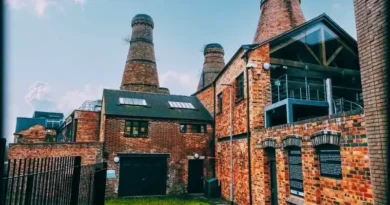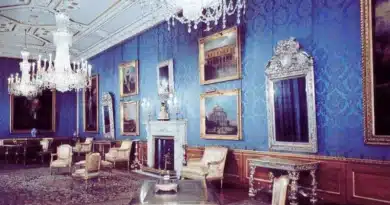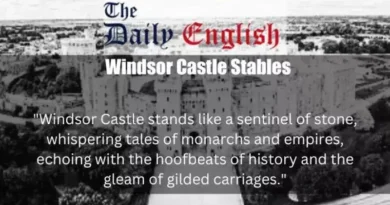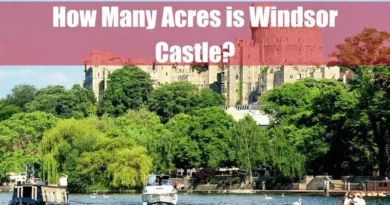Do the Royal Family Own Windsor Castle?
Windsor Castle is not privately owned by the Royal Family; it is part of the Crown Estate. This means it is held by the reigning monarch in right of the Crown and managed by an independent organization.
The Crown Estate’s revenues go to the UK Treasury, and a portion is returned to the monarchy through the Sovereign Grant for official duties and property maintenance.
Windsor Castle is a royal residence and a public historical site, reflecting its unique status as a property of national significance, maintained for public benefit and used for state functions.
Key Takeaways
| Section | Key Takeaway |
|---|---|
| Introduction | Windsor Castle, a significant royal residence, is part of the Crown Estate, not privately owned by the Royal Family. |
| Historical Background of Windsor Castle | Constructed in the 11th century by William the Conqueror, Windsor Castle has a rich history, including renovations by Henry III and Edward III. |
| Ownership Structure of Windsor Castle | Windsor Castle is owned by the Crown Estate, held by the reigning monarch in right of the Crown, and not as private property. |
| The Role of the Crown Estate | The Crown Estate manages Windsor Castle, ensuring its maintenance and use for state functions and public engagement. |
| Legal and Financial Aspects | Windsor Castle is Crown property funded by the Sovereign Grant and revenue from public tourism. |
| Distinction Between Crown Estate and Private Ownership | Crown Estate properties like Windsor Castle are distinct from private royal properties such as Sandringham House and Balmoral Castle. |
| Current Use and Function of Windsor Castle | Windsor Castle is used for state functions, official events, and public tours, highlighting its dual role as a royal residence and historical site. |
| Public Perception and Misconceptions | Many people mistakenly believe Windsor Castle is a private royal residence, but it is actually owned by the Crown Estate and managed for public benefit. |
| Case Studies of Other Crown Estate Properties | Properties like Buckingham Palace and the Palace of Holyroodhouse are also part of the Crown Estate, managed similarly to Windsor Castle for state and public use. |
Let’s discuss in detail:
Introduction

Windsor Castle, located in Berkshire, England, is a historic fortress and royal residence. It has been a continuous home for British monarchs since the 11th century, making it one of the oldest occupied castles in the world. The castle’s grandeur, extensive grounds, and historical significance make it a notable landmark and a symbol of the British monarchy.
Understanding the ownership of Windsor Castle is crucial as it highlights the distinction between Crown property and private assets of the Royal Family. This knowledge clarifies the castle’s legal status, funding, and usage, providing insight into the management of royal properties and the monarchy’s role.
Historical Background of Windsor Castle

Construction by William the Conqueror
Windsor Castle was originally constructed by William the Conqueror in the 1070s. It was strategically located to oversee the River Thames and to assert Norman’s control over the surrounding area. Initially built as a motte-and-bailey structure, the castle’s early design focused on fortification and defence.
Evolution Through the Centuries
Over the centuries, Windsor Castle underwent significant transformations:
- Henry III: In the mid-13th century, Henry III rebuilt the castle, creating luxurious royal apartments and expanding its defensive structures.
- Edward III: In the 14th century, Edward III further enhanced the castle, transforming it into a grand palace. His work included the construction of the St George’s Hall and the Round Tower.
- George IV: In the 1820s, George IV initiated extensive renovations, giving the castle its current Gothic appearance. Architect Sir Jeffry Wyatville redesigned the State Apartments and added new towers and battlements.
These renovations and expansions reflect the castle’s evolving role from a military stronghold to a royal residence and state venue.
Ownership Structure of Windsor Castle

Explanation of What Constitutes the Crown Estate
The Crown Estate is a collection of lands and holdings belonging to the British monarch as a corporation sole. It includes urban properties, rural estates, and significant historical sites. The revenues generated from the Crown Estate are managed by an independent board and contribute to the national treasury.
Historical Context of How Windsor Castle Became Part of the Crown Estate
Windsor Castle has been part of the Crown Estate for centuries and is held by the reigning monarch in the right of the Crown. This means the castle is not personal property but is maintained for the use of the monarchy and the state. Including Windsor Castle in the Crown Estate ensures its preservation and public accessibility.
The Role of the Crown Estate

Description of the Crown Estate’s Function and Governance
The Crown Estate is managed by the Crown Estate Commissioners, an independent organization responsible for overseeing the administration and maintenance of Crown properties. The estate’s revenues are used to support various governmental and royal functions.
How Windsor Castle Fits Into the Overall Portfolio of the Crown Estate
Windsor Castle is a key asset within the Crown Estate’s portfolio. It serves as both a royal residence and a public historical site. The estate ensures the castle is well-maintained and accessible to the public while preserving its historical and cultural significance.
Legal and Financial Aspects

Legal Status of Windsor Castle as Crown Property
Legally, Windsor Castle is Crown property, meaning it is owned by the reigning monarch in right of the Crown. This legal framework ensures that the castle remains under public ownership and is managed for the nation’s benefit.
Financial Implications and Funding for Maintenance
The maintenance and upkeep of Windsor Castle are funded through the Sovereign Grant, a percentage of the Crown Estate’s profits allocated to support the monarchy’s official duties.
Additional funding comes from tourism revenue and special grants for historic preservation. This financial model ensures that the castle remains in excellent condition and is accessible to the public.
Distinction Between Crown Estate and Private Ownership

Difference Between Properties Owned by the Crown and Private Properties of the Royal Family
Crown properties, such as Windsor Castle, Buckingham Palace, and the Palace of Holyroodhouse, are held by the monarchy in the right of the Crown and managed for public benefit. In contrast, private properties like Sandringham House and Balmoral Castle are owned personally by the monarch or other members of the Royal Family.
These private estates are maintained at the personal expense of the family members who own them.
Examples of Crown Estate Properties vs. Private Royal Properties
- Crown Estate Properties: Windsor Castle, Buckingham Palace, and the Palace of Holyroodhouse.
- Private Royal Properties: Sandringham House and Balmoral Castle.
This distinction is essential for understanding the management and funding of these properties.
Current Use and Function of Windsor Castle

Windsor Castle as a Working Palace
Windsor Castle is actively used by the monarchy for various functions. It serves as a residence for the monarch, particularly during weekends and Easter Court. The castle hosts state visits, official banquets, and ceremonial events like the annual Order of the Garter service.
Role in State Functions and Public Events
The State Apartments and St George’s Chapel within Windsor Castle are frequently used for state functions and public events. These spaces provide a grand setting for official receptions, royal ceremonies, and important state occasions.
Areas Open to the Public and Their Significance
Significant areas of Windsor Castle, including the State Apartments, St George’s Chapel, and the castle grounds, are open to the public. These public tours offer visitors a glimpse into the history and grandeur of the royal residence while also generating revenue for its upkeep.
Public Perception and Misconceptions

Common Misconceptions About the Ownership of Windsor Castle
Many people mistakenly believe that Windsor Castle is a private residence of the Royal Family. In reality, it is owned by the Crown Estate and managed for public benefit. This misconception arises from the castle’s dual role as a royal residence and a public historical site.
Clarification of the Royal Family’s Role vs. Actual Ownership
The Royal Family’s role at Windsor Castle is that of occupants and custodians. They reside and conduct official business there, but the property itself is held in trust by the Crown Estate. This arrangement ensures that while the royal family uses the castle, its ownership remains with the Crown, representing the nation.
Case Studies of Other Crown Estate Properties

Overview of Other Properties Like Buckingham Palace and Holyroodhouse
Other significant properties in the Crown Estate include Buckingham Palace and the Palace of Holyroodhouse. These properties, like Windsor Castle, are used for official state functions and are maintained with public funds.
Comparative Analysis of Ownership and Usage
While all Crown Estate properties are managed similarly in terms of maintenance and funding, each has unique features and uses. Buckingham Palace is the main administrative headquarters, while Holyroodhouse is the official residence in Scotland.
Windsor Castle’s blend of public accessibility and official use highlights the flexible management approach applied to these historic properties.
Conclusion
Windsor Castle is owned by the Crown Estate and managed to benefit the public and the monarchy. This ownership structure ensures its preservation and use for official functions and public engagement. The distinction between Crown and private royal properties is crucial for understanding its management and funding.
Understanding the distinction between Crown Estate properties and private royal estates is vital for appreciating the heritage and governance of these iconic landmarks.
Windsor Castle’s status as Crown property underscores its role as a national treasure, maintained for the benefit of the public and future generations.
FAQ
Who owns Windsor Castle?
Windsor Castle is owned by the Crown Estate, which is a collection of lands and assets held by the monarchy in trust for the nation. It is not the personal property of the Royal Family. The reigning monarch, currently King Charles III, has the right to use Windsor Castle as an official residence, but they cannot sell or bequeath it.
Is Windsor Castle privately owned by the Royal Family?
No, Windsor Castle is not privately owned by the Royal Family. It is held in trust by the Crown, which means it belongs to the institution of the monarchy rather than individual members. Private royal residences, such as Balmoral Castle and Sandringham House, are owned personally by the monarch, unlike Windsor Castle.
Does King Charles III own Windsor Castle?
King Charles III does not personally own Windsor Castle. It is part of the Crown Estate and belongs to the monarchy institution, not the individual monarch. He has access to it as the reigning monarch but cannot treat it as personal property or make decisions such as selling it.
Is Windsor Castle part of the Crown Estate?
Yes, Windsor Castle is part of the Crown Estate, a portfolio of properties and lands that generate revenue for the UK government. The Crown Estate is managed independently, and its profits are handed over to the Treasury. A percentage of this revenue is allocated to the Sovereign Grant, which funds the monarchy’s official duties.
Can the Royal Family sell Windsor Castle?
The Royal Family cannot sell Windsor Castle because it is not their private property. The Crown Estate holds it in trust for the nation. Unlike properties like Balmoral Castle, which are personally owned, Windsor Castle is a public asset tied to the institution of the monarchy.
Who pays for the upkeep of Windsor Castle?
The upkeep of Windsor Castle is primarily funded through the Sovereign Grant, which is derived from Crown Estate profits handed over to the UK government. In addition, revenue from ticket sales and events at Windsor Castle is reinvested in its maintenance, but this money is managed by the Royal Collection Trust, not the Royal Family.
Is Windsor Castle a private residence or a public property?
Windsor Castle is a royal residence but not private property. It is classified as public property owned by the Crown Estate. While it serves as the monarch’s home and is used for state and ceremonial purposes, it also opens to the public for tours, making it a blend of both private use and public access.
Why does the Royal Family live in Windsor Castle if they don’t own it?
The Royal Family resides in Windsor Castle because it is an official royal residence provided to the reigning monarch by the Crown Estate. It is a historic symbol of the monarchy, and a working castle used for state functions, ceremonies, and personal living quarters.
Who manages Windsor Castle?
Windsor Castle is managed by the Royal Household and the Royal Collection Trust. The Royal Household oversees its use as a residence and state venue, while the Royal Collection Trust manages public tours and preserves its historical and artistic assets.
Does Windsor Castle generate income for the Royal Family?
Windsor Castle generates revenue through ticket sales, events, and gift shop purchases, but this income does not go directly to the Royal Family. Instead, it is managed by the Royal Collection Trust, which reinvests it into the preservation of royal palaces and collections.
Is Windsor Castle part of the Queen’s private assets?
No, Windsor Castle was not part of Queen Elizabeth II’s private assets, which included properties like Balmoral Castle and Sandringham House. However, Windsor Castle was held in trust by the Crown Estate and used as one of her official residences.
What is the legal status of Windsor Castle?
Legally, Windsor Castle is part of the Crown Estate, which means it is a public asset managed independently of the government and the Royal Family. It is not owned by the monarch personally but is used to support their official duties as head of state.
Does the Crown Estate include Windsor Castle?
Yes, Windsor Castle is included in the Crown Estate. This vast portfolio includes urban properties, rural land, and historic buildings. The Crown Estate generates revenue for the Treasury, and a portion of that revenue funds the monarchy through the Sovereign Grant.
Is Windsor Castle considered a public or royal property?
Windsor Castle is considered royal property but is owned by the Crown Estate. While it is used exclusively by the monarch and the Royal Family, it is ultimately held for the benefit of the nation and has elements of public access.
Do taxpayers fund Windsor Castle?
Yes, taxpayers contribute indirectly to Windsor Castle’s maintenance through the Sovereign Grant, which is funded by the Crown Estate’s profits. Taxpayers do not pay for Windsor Castle directly, but their contributions ensure the monarchy can fulfil its duties, including maintaining official residences like Windsor.
Who built Windsor Castle, and who owns it now?
Windsor Castle was originally built by William the Conqueror in the 11th century as a defensive fortress. Today, it is owned by the Crown Estate and serves as an official royal residence and a symbol of the monarchy’s historical continuity.
Can the public visit Windsor Castle?
Yes, Windsor Castle is open to the public for tours on most days when not used for royal events. Ticket sales support its upkeep through the Royal Collection Trust, which manages visitor access to this historic site.
Does Windsor Castle belong to the King personally?
No, Windsor Castle does not belong to King Charles III personally. It is a working royal palace owned by the Crown Estate, which is held in trust for the nation. Like personal property, it cannot be sold or inherited.
Is Windsor Castle the same as Buckingham Palace in terms of ownership?
Yes, the Crown Estate owns Windsor Castle and Buckingham Palace. They are official royal residences provided to the reigning monarch and managed as national assets, not personal properties.
What happens to Windsor Castle if the monarchy is abolished?
If the monarchy were abolished, Windsor Castle would likely remain under state control as part of the Crown Estate. It could potentially be turned into a museum, national monument, or public property, similar to other historical buildings no longer in royal use.
References
- The Royal Family’s Official Website
- Crown Estate Overview
- Windsor Castle Historical Information
- Express Article on Royal Residences
- Historic England Listing









